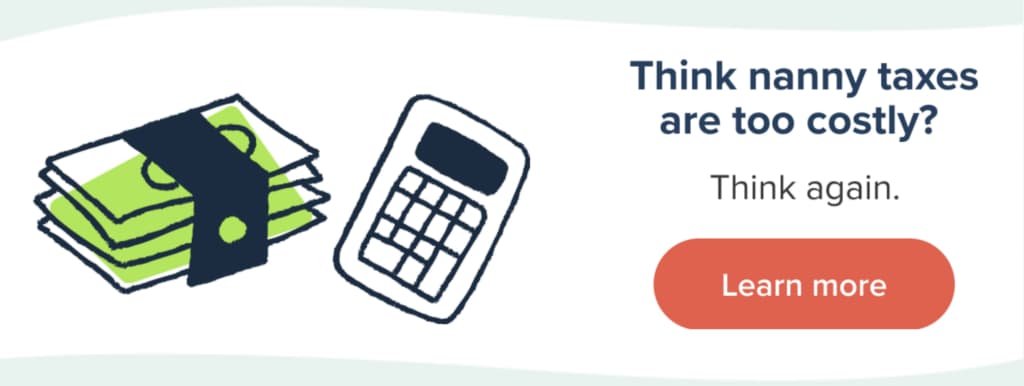Many families are stuck with the dilemma of what to do with the time period between their kids getting out of school and the parents getting home from work. Some opt for after-school programs, but it’s also common to hire an after-school sitter to work a couple of hours each weekday. If you go with the latter option, it’s important to understand that, while you’re not hiring a full-time nanny, even a regular after-school nanny can be classified as your employee under IRS guidelines if you pay them $2,700 or more during the course of the year.
“The $2,700 threshold really sneaks up on families that don’t need full-time care for their kids,” says Tom Breedlove, Sr. Director of Care HomePay. “But even if you only pay someone $150 per week, you’ll reach that threshold in just 18 weeks.”
Why can my after-school nanny be considered my employee?
IRS Publication 926 says if you hire someone to work in your home and follow the guidelines you set — such as picking your kids up from school at a certain time, taking them to their activities and giving them pre-approved snacks — that person is most likely your employee. This also means you have to withhold certain taxes from their pay and pay household employer taxes. Some families may say you can treat your after-school nanny as an independent contractor instead, but this is almost never the case.
Learn more about the difference between employees and independent contractors.
How do I handle taxes and payroll for my after-school nanny?
There are five basic steps you need to follow to effectively manage your after-school nanny’s payroll and your household employment taxes:
Give your nanny a Form W-4 so you can figure out how much in federal income taxes to withhold each pay period. If you live in a state with income taxes, you’ll need to have them fill out a state withholding form too.
Track how many hours your nanny is working each week and multiply that by your nanny’s hourly rate to get their gross (before taxes) wages.
Use our nanny tax calculator to input your nanny’s gross wages and their income tax withholding elections to see the total amount of taxes you need to withhold for the pay period.
Throughout the year, file state tax returns, pay state taxes and send in federal estimated tax payments to the IRS. Use this timeline as a general guide for when these returns are due — although your state may have a different timeline for you to follow.
After the end of the year, prepare a Form W-2 for your after-school nanny so they can file their personal income tax return and file a Schedule H with your own tax return.
If this feels too overwhelming, HomePay can help you with all the tax and payroll steps just described.
What are the benefits paying an after-school nanny on the books?
The obvious benefit is having peace of mind knowing you’ve followed the law. Beyond that, you’re showing your nanny that you have their best interests in mind. Yes, your employee ends up with less cash in their pocket on payday, but that money makes it easier for them to qualify for benefits like Social Security, Medicare and unemployment if they ever need it. And by paying on the books, you may be able to take tax credits in the from of a dependent care flexible spending account (FSA) and/or the child care tax credit.
Say, for instance, you hire an after-school nanny and pay them $4,000 for the entire year. By paying them legally as a household employee, you may actually be able to save money. Don’t believe us? The numbers don’t lie:
| Your Nanny’s Gross Wages | $4,000 |
| Social Security Taxes (6.2%) | $248 |
| Medicare Taxes (1.45%) | $58 |
| Unemployment Insurance Taxes | $200 (estimated) |
| Total Employer Taxes | + $506 |
| Total Cost Before Tax Breaks | $4,506 |
| Savings from Dependent Care Account (FSA) | – $1,500 (estimated) |
| Total Cost After Tax Breaks | $3,006 |
“If you don’t have access to an FSA, you could still come out ahead by paying your after-school caregiver on the books,” says Breedlove. “You can take advantage of the child care tax credit and take a tax break of approximately 20% on $3,000 of child care costs you incurred if you have one child ($600) — or on all $6,000 if you have two or more children ($1,200).
Either way, you’ll still save money using the above scenario because your tax breaks outweigh your employer costs.
Your Next Steps:
* The information contained in this article is general in nature, may not be applicable to your specific circumstances, and is not intended to be a substitute for or relied upon as personalized tax or legal advice.

